11. CAPITALISM ... AND INDUSTRIAL GROWTH

CAPITALISM IN THE "GILDED AGE"
CONTENTS
 Capitalism in the "Gilded Age" Capitalism in the "Gilded Age"
 The "Captains of Industry" (or "Robber The "Captains of Industry" (or "Robber
Barons" as others termed them!)
 The extravagance of this wealthy elite The extravagance of this wealthy elite
 The American "Middle Class" is doing The American "Middle Class" is doing
pretty well for itself as well
 Americans can afford even the luxury of Americans can afford even the luxury of
idealizing the American
woman
 Of course not all was
perfect in the Of course not all was
perfect in the
picture of American "Middle Class" life
The textual material on this webpage is drawn directly from my work
America – The Covenant Nation © 2021, Volume One, pages 340-347.
|
A Timeline of Major Events during this period
| 1890s |
America's entry into the "Gilded Age" (for some Americans anyway)
1890 At this point, some mere 1 percent of the American population at the top of the social ladder earns over 50 percent of the nation's wealth ... with – at the other end of the social ladder – 44 percent of the population together earning only 1 percent of the nation's wealth
The Sherman Antitrust Act comes into force (Jul) ... originally designed to break up trade unions ...
but ultimately used to go after industrial monopolies
Also,
Sherman's Silver Purchase Act goes into effect (Jul) in support of the
"silverites"
In
Congressional elections, Republicans lose more Congressional seats (Nov)
1892 Harrison loses his reelection to Cleveland (Nov) ... and his wife to tuberculosis two weeks before the election
1893 Another economic panic hits America ... which Cleveland worsens by having Congress repeal Sherman's
Silver Act; industrial unemployment expands greatly as companies shut
down
1894 The economic situation worsens further with widening worker unrest ... stirred by Socialist Debs; hard hit is the railroad industry, with 125 thousand workers on strike – Cleveland sending troops to break the strike at the Pullman (luxury railroad car) plant
Cleveland's Democrats suffer a huge setback in the 1894 Congressional
elections (Nov)
1895 Cleveland finally accepts Morgan and Rothchild's offer to sell 3.5 million ounces of gold to the US Treasury (in exchange
for 30-year bonds) ... saving the dollar from collapse
1896 Edison invents the movie projector
The strongly silverite Bryan defeats
pro-gold Cleveland as Democratic Party candidate ... but loses
the national election to Republican McKinley ... McKinley's
campaign skillfully directed by Hanna
|
| 1900s | American politics, economics and culture as the country enters the 20th century
1900 McKinley is renominated as Republican candidate for US president, with Roosevelt as his vice-presidential
candidate; Mckinley wins the election a second time against Bryan
1901 But McKinley is only six months into his second term when he is shot and killed; Roosevelt is thus now US president
Carnegie sells
his steel business to J.P. Morgan for $480 million; he gives most of
his earnings away to various charities and social endeavors
1903 Ford sets up the Ford Motor Company in Detroit
The Wright
brothers test their first engine-powered, human-piloted plane (Dec)
1904 The Olds Motor Vehicle Company of Michigan is the leading US car manufacturer at this point
Roosevelt easily
wins reelection as US president (Nov) ... but promises not to run again
1905 The Wright brothers fly a plane 24 miles in 39 minutes!
1906 A huge earthquake hits San Francisco hard (Apr)
A strong
pentecostal Christian revival breaks out on Azusa Street in Los Angeles
(also Apr) – and continues in one form
or another until around 1915 ... ultimately inspiring the creation of
the Assemblies of God – and other forms of pentecostalism to follow ... all the way up to today
1907 Morgan forms a group of investors to put money back into a failed Wall Street ... saving the American economy from
collapse; he also buys a failing industrial conglomerate; Roosevelt does not press the matter
of potential monopolitistic practices ... for the action is well needed
He does however
act strongly in supporting the Tillman Act ... preventing corporate
contributions to federal political campaigns – so as not to let the big-money boys control the democratic process (that law would be set aside by the Supreme Court with rulings in 2010
and 2014 ... in effect making it "unconstitutional" to set boundaries on campaign contributions!)
1908 Ford introduces the Model T Ford at $825 ... comparatively very inexpensive (with prices dropping every year as production expands rapidly)
The Wright
brothers fly their newest model before the disbelieving but now
astonished French ... and the US military (Sep)
Roosevelt ends
his presidency by sending a fleet of 16 white-colored battleships on a
cruise around the world ... to announce America's arrival as a great power
Roosevelt's
friend Taft easily wins the Republican Party presidential nomination
... and the presidential election itself (Bryan again the Democratic Party candidate)
|
| 1910s | America ... just prior to the outbreak of "The Great War" (World War One)
1912 The Republican Party presidential convention splits in a confrontation between Roosevelt and Taft ... supporting Taft – and sending Roosevelt off to start his own Progressive ("Bull Moose") Party
With the
Republicans split, the Democratic Party candidate Wilson wins the
presidential election
1913 The 16th Amendment is ratified (Feb), allowing Congress to collect an income tax directly from the American citizenry
The 17th
Amendment is ratified (Apr) "democratizing" the US Senate ... making
the election of US senators no longer the
responsibility of the states (their governors or legislatures) but now a matter of direct election by the American voter
The Federal
Reserve is founded to intervene with funding when the American economy
seems in danger of collasping
Rockefeller
establishes his Foundation with $250 million in startup funds for
medical research
Ford institutes his new moving assembly line ... making the Model T even cheaper – affordable by even his own assembly workers
1914 At this point American industry is responsible for one-third of the world's total industrial production ... more than
Britain, France and Germany combined ... though these European nations
still see America as a rather backward society
|
CAPITALISM IN THE "GILDED AGE" |
|
During the time of post-Civil-War recovery, a new
social dynamic had been rising within the fast-growing American cities:
the adoration of modern technology and those who provided it, the
promise of wealth flowing out of this dynamic, and the seeming control
over life provided by the scientific mentality that undergirded this
whole social-cultural revolution. This was due in no small part to the
Civil War and its lasting effect on the American economy. The war's
demand for steel, and the iron ore and coal to make it, and the
railroads and boats to ship it, and the financial institutions to fund
its initial outlay, and the laborers to work the whole system – all
this had made a deep impact on what was formerly almost purely an
agrarian society.
Apart from the early railroad ventures
during and immediately after the war, the government played in the
post-war period only a minimal role in the on-going development of this
new industrial society, especially as the war and its needs receded
from view and the system seemed to run simply under its own dynamics
rather than on the basis of popular social-political demands.
Nor was God invited to play a role in the
development of this new society. America's Grand Destiny now seemed to
be driven forward largely by the huge material rewards that fell to the
particularly ambitious and fearless. Fortunes could be made rather
quickly by very enterprising individuals (and they could be lost almost
as quickly). And these fortunes were awesome, often exceeding
(sometimes vastly) the levels of wealth of the European nobility.
Indeed, it was a Gilded Age (Age of Gold) for successful American
industrialists.
This was a perfect setting for the spirit
of Darwinism to soar. Certainly the basic theme of this rising social
order was quite Darwinian: progress through survival of the fittest. To
the strong belonged the spoils of their conquests. But for those who
fell to the wayside in this struggle for survival there would be no
tears wept. But the risk of this competitive struggle seemed worth it,
at least to those who anticipated striking it rich in this new game of
potentially limitless opportunity (if you were willing to play it hard
and fast).
For others, however, this game offered
virtually no opportunity – only drudgery and painful hardship on this
path of survival. With the closing of the Western frontier and loss of
the ability to secure cheap Indian land, farm boys were forced to find
work in these industrial enterprises, not with the hope of striking it
rich, for there was almost no entry point for them into a game that
required substantial startup money or capital to get up and running in
this new capitalist system. These farm boys came penniless, offering
only their labor. But for their labor they received very little in
return. In the eyes of the Darwinists these new industrial workers were
not seen as people, as fellow Americans to whom they owed some sense of
mutual responsibility. Instead they were viewed by the rising class of
wealthy capitalists only as economic costs, costs which they had to
keep low in order to gain the profits that would win them victory in
this Darwinian game. What was happening to America? Had it
gone from African slavery only to replace it with a shockingly similar
wage-slavery? Was this the social outcome that so many young men had
given their lives for in the recent Civil War?a name="Captains-of-Industry"> |
THE "CAPTAINS OF INDUSTRY" (OR "ROBBER BARONS" AS OTHERS TERMED THEM!) |
|
The rapidly widening gap between hard-working
American laborers and the Captains of Industry was vast … and shocking.
According to a survey done in 1896,1
of a total of 12½ million American families in 1890, 125,000 very
wealthy families, or 1 percent of the total number of families in
America, earned over 50 percent of America's total family wealth. The
well-to-do, comprising about 11 percent of the total number of
families, earned about 35 percent of the nation's family wealth, the
middle classes, comprising about 44 percent of the total, earned about
12½ of the total wealth, and the poorer classes, comprising another 44
percent of the families, earned only about 1 percent of the total
wealth.
And among this very wealthy 1 percent of
the population, an even smaller number of families stood out way above
the rest. A few are mentioned here just to point out how capitalism was
working in the latter part of the 1800s.
Cornelius "Commodore" Vanderbilt.
 Vanderbilt
was nicknamed "Commodore" because he got his climb out of poverty as a
boat operator back in the 1810s, ferrying New York passengers between
Staten Island and Manhattan. It was a very competitive business, but
Cornelius Vanderbilt knew how to compete. He fought against the
well-defended steamboat monopolies that had secured privileged routes
around New York, buying out companies, although at times he even had
some of his own operations bought out by others. Vanderbilt
was nicknamed "Commodore" because he got his climb out of poverty as a
boat operator back in the 1810s, ferrying New York passengers between
Staten Island and Manhattan. It was a very competitive business, but
Cornelius Vanderbilt knew how to compete. He fought against the
well-defended steamboat monopolies that had secured privileged routes
around New York, buying out companies, although at times he even had
some of his own operations bought out by others.
But
by the end of the 1830s, Vanderbilt had secured a number of his own
steamboat monopolies, and in the early 1840s he began to manage small
railroads that connected with his steamboat lines. In 1847 he took over
a major railroad running from New York to Boston, and bought out a
number of competitors, putting his railroad line in a dominant position
on that vital route. Then with the beginning of the California gold
rush in 1849 he switched to shipping on the high seas, even at one time
attempting to put together a group to build a canal across Nicaragua
between the Atlantic and Pacific. He failed at this attempt, but did
set up a land and water connection between the two oceans, and then
developed a Pacific steam line to California.
In
the 1850s he bought a large company that manufactured the steam engines
for the steamboat industry, and also jumped into the trans-Atlantic
steamship business. Even at one point he found himself deeply involved
in Central America against a major competitor – and various authorities
supporting that competitor ... including some military action. So
Vanderbilt moved his operations further south to Panama and then
acquired a monopoly on a steamship line running from there to
California.
During the Civil War he donated and staffed at his own expense his flagship, the Vanderbilt, which was used to hunt Confederate raiders (such as Confederate Admiral Semmes and his warship, Alabama).
After
the war he was joined by his son Billy in acquiring a number of New
York railroads, and brought them together as the future New York
Central Line, one of the first corporate giants in America. He also
constructed a large railroad terminal in Manhattan on 42nd Street, also
the forerunner of New York's Grand Central Terminal, the world's
largest train station.
The
only time Vanderbilt found his move blocked was in his attempt to buy
up the Erie Railroad, which Jay Gould and his associate James Fisk
fought off by watering down stock (quite in violation of the law, which
Fisk avoided by bribing New York legislators!), to weaken Vanderbilt's
position after Vanderbilt had bought up, at some considerable expense,
what he thought
would be a controlling share of the business. This massive issue of new
stocks by Gould and Fisk devalued Vanderbilt's stocks so badly that his
losses were enormous. This created a deep and lasting enmity between
Vanderbilt and these two equally ambitious and notoriously clever
financial wizards. But Vanderbilt would not again be on the losing side
of this rivalry, a rivalry that lasted all the way up to his death in
1877.
At his death he was worth the monumental sum of $100 million,2
most of which went to his son Billy (although he was very generous to
his other many sons and daughters). He also donated the $1 million that
founded the university in Nashville, Tennessee, that still carries his
name, which at the time was the largest charity contribution ever
offered by a single donor. He also gave rather generously to churches,
including the 8½ acres which he gave to the Moravian Church on Staten
Island for a cemetery, where he himself is buried.
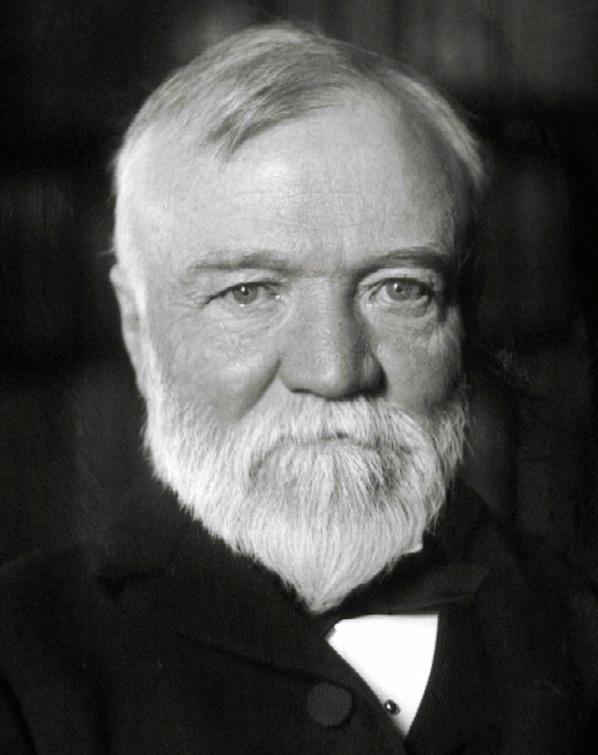 Carnegie
came with his very poor parents from Scotland to Pittsburgh in 1848 at
age thirteen, to live with relatives, and soon found a menial job to
help support the family. But he quickly taught himself to read Morse
Code messages without having to first translate them, impressing
officials at the Pennsylvania Railroad who hired him for just such
work. Obvious to his supervisor, Carnegie was an eager and fast
learner, and as he studied the larger world of business he proved to be
a great strategic thinker – one who thought about how different
industrial operations could be combined to produce a complete in-house
operation, from securing a company's own raw materials, to building its
own machinery, and shipping on its own carriers to its own distribution
centers. Taking up this process of industrial combination himself,
Carnegie detected the central importance of the iron industry and set
up his own company to build the iron bridges that would be needed by
the railroad industry. He then branched into the world of iron
production, supplying his bridge company with its own iron. He then
advanced to the bigger business of steel production, assembling a huge
team of steel engineers, and soon was helping America to outpace
Britain and Germany (Prussia) in steel production. He then complemented
this business by going into the coal/coke business to supply his
ever-improving furnaces with their own fuel. His operations were so
efficient that he was able to slash steel prices, increasing immensely
the demand for his steel production. By the end of the 1800s Carnegie
was producing steel at the rate of 6,000 tons per day. Carnegie
came with his very poor parents from Scotland to Pittsburgh in 1848 at
age thirteen, to live with relatives, and soon found a menial job to
help support the family. But he quickly taught himself to read Morse
Code messages without having to first translate them, impressing
officials at the Pennsylvania Railroad who hired him for just such
work. Obvious to his supervisor, Carnegie was an eager and fast
learner, and as he studied the larger world of business he proved to be
a great strategic thinker – one who thought about how different
industrial operations could be combined to produce a complete in-house
operation, from securing a company's own raw materials, to building its
own machinery, and shipping on its own carriers to its own distribution
centers. Taking up this process of industrial combination himself,
Carnegie detected the central importance of the iron industry and set
up his own company to build the iron bridges that would be needed by
the railroad industry. He then branched into the world of iron
production, supplying his bridge company with its own iron. He then
advanced to the bigger business of steel production, assembling a huge
team of steel engineers, and soon was helping America to outpace
Britain and Germany (Prussia) in steel production. He then complemented
this business by going into the coal/coke business to supply his
ever-improving furnaces with their own fuel. His operations were so
efficient that he was able to slash steel prices, increasing immensely
the demand for his steel production. By the end of the 1800s Carnegie
was producing steel at the rate of 6,000 tons per day.
But his aggressive industrial
empire-building put him at odds with his skilled laborers (as opposed
to the larger unskilled work-force he employed), who were driven less
by a desire for personal success than by a desire to see high wage
rates applied collectively to their craft union. As Carnegie viewed
matters, this was designed merely to produce among the skilled workers
a sense of wage and labor security rather than individual opportunity
for advancement. And worse, the union seemed to be running his
Homestead Plant ever since their victory in the 1889 strike. Thus when
in 1892 Carnegie's aggressive corporate supervisor Henry Clay Frick
decided to break the growing power of the craft union by declaring a
huge reduction in skilled workers' wages, a massive strike was again
called by the union at the huge Homestead plant. (This strike Frick
would have to deal with himself because Carnegie was back in Europe at
the time). The strike was finally broken by the heavy-handed measures
of the Pinkerton agents (resulting in deaths on both sides of the
conflict). And Frick was shot twice by a frenzied anarchist, but
survived the ordeal, the shooting helping to stir a general antipathy
against the striking workers.
Soon after this, Carnegie was
ready to get out of the business world (the Carnegie Steel Company had
by that time achieved the awesome goal of producing more steel than all
of Britain's mills combined!) and in 1901 sold his entire operation to
the financial titan J.P. Morgan for $480 million (the largest such
corporate transaction ever, amounting to over $13 billion in today's
dollars), thus helping to create the United States Steel Corporation.
This also made Morgan the uncontested giant of the American financial
world and Carnegie a very rich man, though over the next years Carnegie
would give most of that wealth away to various charities and social
endeavors and spend the rest of his life traveling.
1Charles B. Spahr, An Essay on the Present Distribution of Wealth in the United States, New York: T.Y. Crowell & Co.,1896, p. 69.
2This
would make him the second richest man in American history, ranking only
behind Rockefeller. The $100 million would be approximately equivalent
to $150 billion in today's dollars. Interestingly, he lived modestly.
All the lavish Vanderbilt estates that were built across the American
East were actually commissioned later by his descendants.
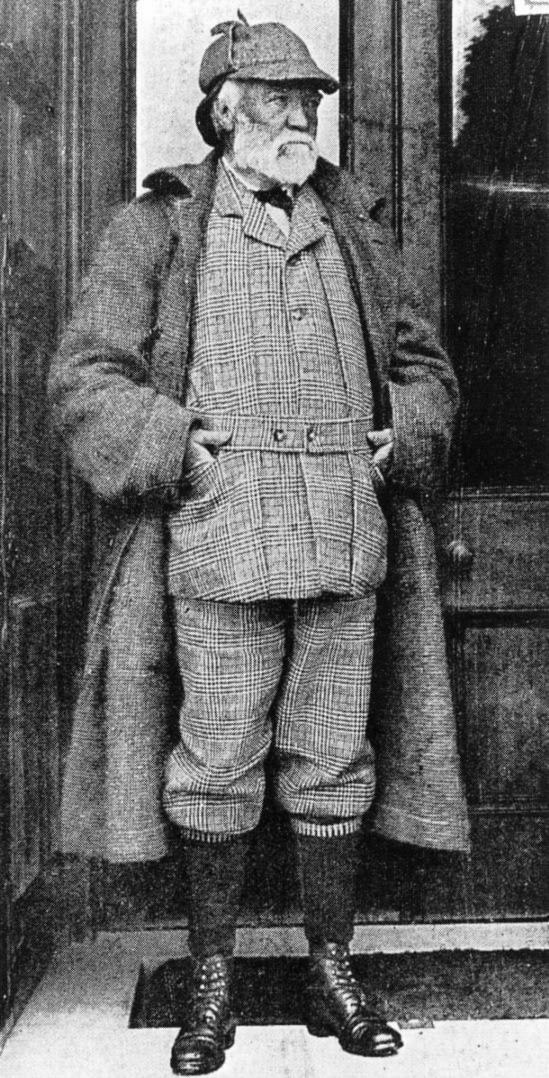 Andrew Carnegie in his Scottish
attire
Andrew Carnegie in his Scottish
attire
|
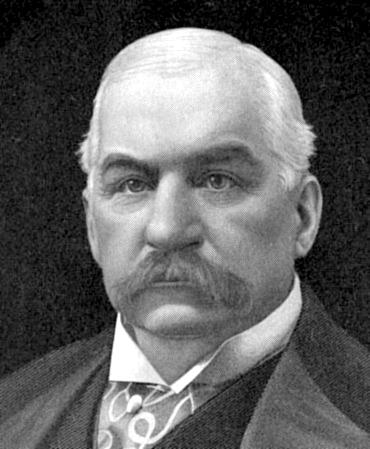 Morgan
was born in 1837 at the opposite end of the social scale from Carnegie,
Morgan being the son of a very successful Connecticut businessman and
banker, schooled in his youth at fashionable schools in Boston,
Switzerland and Germany. Finishing his schooling, he joined his
father's banking office in London for a year before returning to the
States to work for his father's company in New York City. He was a
clever financier, for instance during the Civil War purchasing 5,000
rifles from a Union depot at $3.50 and then reselling them to the U.S.
Army for $22 each! Morgan
was born in 1837 at the opposite end of the social scale from Carnegie,
Morgan being the son of a very successful Connecticut businessman and
banker, schooled in his youth at fashionable schools in Boston,
Switzerland and Germany. Finishing his schooling, he joined his
father's banking office in London for a year before returning to the
States to work for his father's company in New York City. He was a
clever financier, for instance during the Civil War purchasing 5,000
rifles from a Union depot at $3.50 and then reselling them to the U.S.
Army for $22 each!
Over the years he demonstrated his skill
at buying up struggling companies at bargain rates and then
reorganizing them into profitable operations. He even at one point came
to the aid of the U.S. Treasury in the midst of the Panic of 1893, when
by 1895 the Federal Treasury was nearly out of gold and facing
financial default. Morgan joined with the Rothschild bankers of Paris
to offer to sell the government 3.5 million ounces of gold in exchange
for thirty-year bonds. At first U.S. President Cleveland turned down
the offer, but then realizing how close the government was to default,
finally accepted Morgan's offer. It indeed saved the status of the U.S.
Treasury, but undercut Cleveland's standing with the agrarian wing of
his Democratic Party.
Again in 1907 Morgan stepped in to rescue
the American economy, this time caused by a massive sell-off on Wall
Street after the failure of a large copper venture threatened to pull
down a number of banks that had invested heavily in the venture
(actually Knickerbocker, New York's third largest trust company, did
fail). This crisis was so big that Morgan did not attempt to answer the
challenge alone, but gathered a number of other New York banks to join
him in putting money back into Wall Street and restoring investors'
confidence, thus averting a stock market collapse.
Another crisis soon followed, this time
caused by the collapse of a major industrial conglomerate invested in
coal, iron, and railroads. With President Teddy Roosevelt's permission,
Morgan stepped in to take over the fallen conglomerate, aware that this
would invite charges of monopolistic behavior. But it had to be done to
avert yet another panic in the world of American investment.
But as a result of these interventions,
the U.S. government finally (1913) made the move to set up a government
agency, the Federal Reserve, to intervene when such economic crises
began to show signs of developing. In a sense, Morgan himself had shown
the U.S. government the proper procedure by which to intervene when
necessary, contributing greatly to the stability of the U.S. economy,
which throughout the 1800s had experienced one speculative crisis after
another.
|
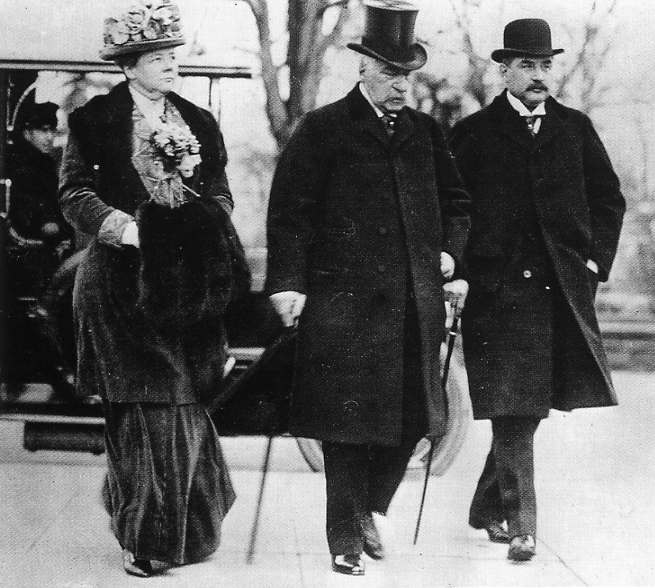 J.P. Morgan with his daughter
Louisa and son J.P., Jr.
J.P. Morgan with his daughter
Louisa and son J.P., Jr.
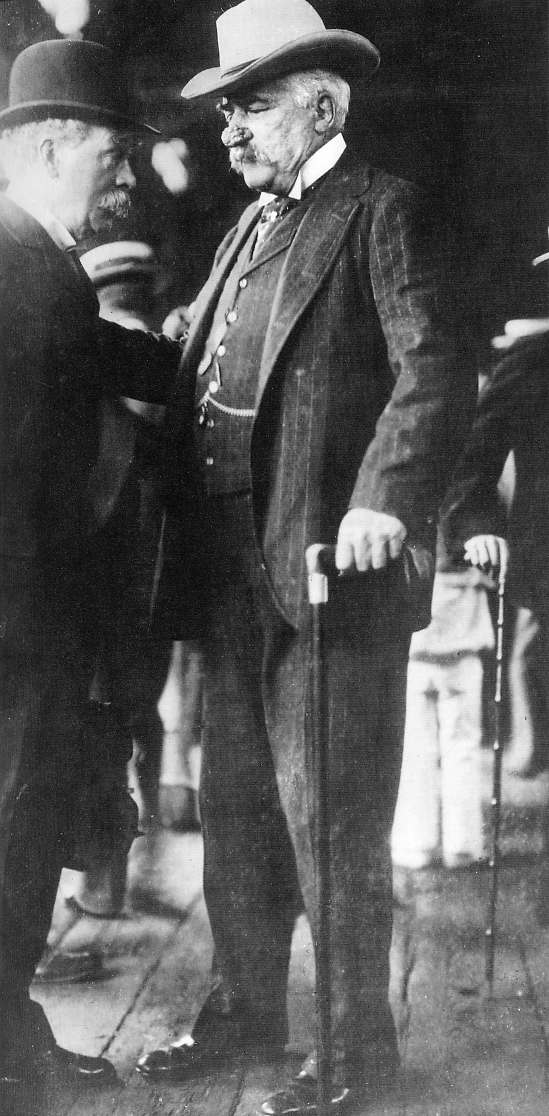 John Pierpoint Morgan
(1837-1913)
John Pierpoint Morgan
(1837-1913)
Frederick W. Nash / William
Howard Taft National Historic Site
|
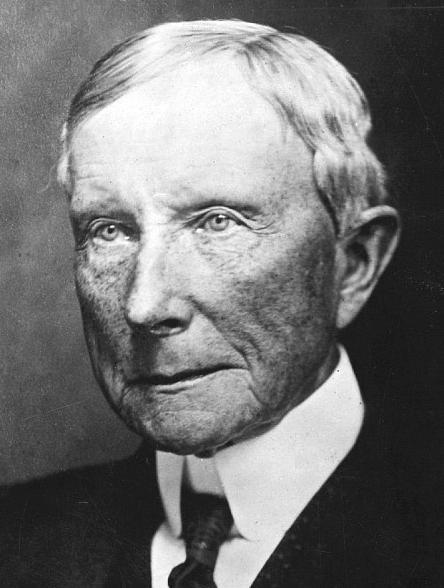 Rockefeller
was raised in tough circumstances in upstate New York and then in Ohio,
his father being a wandering con-man who only infrequently visited the
home, his mother however being a very strong, positive influence on his
life. As a youth he proved himself to be very bright, quick with
numbers, hard-working, and loving learning, putting himself through a
large amount of schooling. He was also a person of deep Christian
faith. Together these elements made him an eager challenger of the
larger world. Rockefeller
was raised in tough circumstances in upstate New York and then in Ohio,
his father being a wandering con-man who only infrequently visited the
home, his mother however being a very strong, positive influence on his
life. As a youth he proved himself to be very bright, quick with
numbers, hard-working, and loving learning, putting himself through a
large amount of schooling. He was also a person of deep Christian
faith. Together these elements made him an eager challenger of the
larger world.
During the Civil War he and his brother
raised the capital to found a business providing produce to the Union
armies, and then the two of them in 1863 joined a team of investors to
build in Cleveland's fast-growing industrial area an oil refinery
designed to produce kerosene, helping to move the country away from
expensive whale oil as the source of its lighting. In 1865 he bought
out the leading partners of the business and through considerable
borrowing put himself (and the remaining investors, including his
brother) in a well-placed position within an economy turning more and
more to the use of kerosene.
By 1870 he moved to establish the
Standard Oil Company, which quickly became Ohio's largest oil company.
Then moving into the shipping business, he was able to acquire for his
oil business special railroad rates that allowed him vast advantage in
his competition with smaller oil companies, which he was quick to buy
out when they stumbled. Then in 1874 he signed a secret deal with his
largest New York competitors, Pratt and Rogers, to buy out their oil
company and bring the two on his company as partners. And thus
Rockefeller proceeded to move through the infant oil industry, buying
out company after company until, by the end of the 1870s, Standard Oil
owned 90 percent of America's oil business. He even at one point took
on the huge Pennsylvania Railroad Company, starting a price war in
shipping rates, which finally forced the railroad to sell its own oil
interests to Standard Oil (actually Rockefeller was moving away from
shipping by rail to shipping by pipeline). But this in turn brought
charges of monopolistic practices (not the first time, however, nor the
last) in the courts of Pennsylvania and other states. These court cases
Rockefeller found himself battling constantly, gaining for Rockefeller
a very negative national reputation.
Adding to this negative image was when in
1882 Rockefeller set up the Standard Oil Trust, a move to bring the
many separate state corporations under a single domain (at that time
companies were licensed to operate within only the state granting the
corporate license). Not only did the creation of this new trust produce
a huge outcry of monopoly in the nation's press, other corporations,
seeing the benefits of this move, were quick to set up similar
organizations, birthing the age of the massive American trust
companies. He also birthed the practice (taken up by New York's
National Petroleum Exchange) of selling oil futures on the open market
as shares or certificates based on oil held in storage, thus making the
pricing of oil a public matter.
Eventually Rockefeller ventured into the
growing world of international oil production, then moved from kerosene
production into the business of natural gas, and even the refinement of
gasoline (previously considered just a wasteful byproduct of kerosene
production), just as the world of automobiles, with their new internal
combustion engines, was opening up.
But the 1890 Sherman Antitrust Act,
originally designed to break up labor organizations, would soon be
turned against Rockefeller, especially as he moved to acquire oil
fields in other American states, his vast oil fields in Pennsylvania
beginning to play out. He also entered the business of iron ore
production and shipment with Carnegie, causing a huge public uproar.
With the arrival of the 20th century, Rockefeller found himself under
constant attack, by U.S. President Teddy Roosevelt, wielding the
Sherman Antitrust Act wherever he could; by Ida Tarbell, publishing a
lengthy exposé on Standard Oil’s underhanded business practices; and
finally in 1911 by the U.S. Supreme Court, which handed down the
decision that as a monopoly violating the Sherman Act, Standard Oil had
to be broken up into thirty-four separate companies (eventually
becoming Conoco, Amoco, Chevron, Exxon, Mobil, Sohio, Pennzoil, etc.).
Yet Rockefeller remained a significant stockholder in these various
companies, and the oil business continued to be personally very
profitable for Rockefeller. This eventually made Rockefeller the
richest man in the world at the time (and by comparison, even still
today!).
But like Carnegie, Rockefeller’s business
sense was based on a larger view of his responsibilities to the world
around him. He never saw the making of money as evil, seeing how though
some people would fall by the wayside in the competitive world of
business and finance, the overall effect was clearly one of economic
advancement for the society as a whole.
True, some benefitted vastly more than
others in this trend, but even here Rockefeller felt a sense of
responsibility to his world, setting up charity organizations designed
to help the young and ambitious climb to greater social heights.
Indeed, this was part of his understanding of his Christian
responsibilities, which began with his church tithing even as a
teenager, and which interestingly included teaching Bible at the
Baptist church he attended as an adult. But his charity helped turn by
1900 a small Baptist college into the University of Chicago, his grants
to church mission produced the Central Philippine University in 1905,
and ultimately his sense of charity led to the creation of an
outstanding medical research center in New York City. In 1913 he
established the Rockefeller Foundation, granting it $250 million to aid
in medical research and training, and in 1918, granted $550 million for
another foundation (later absorbed into the Rockefeller Foundation) for
social research.
|
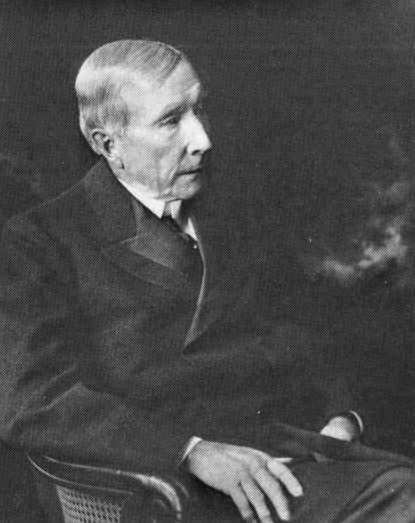 John D. Rockefeller – founder
of Standard Oil Company and America's first billionaire
John D. Rockefeller – founder
of Standard Oil Company and America's first billionaire
Library of
Congress
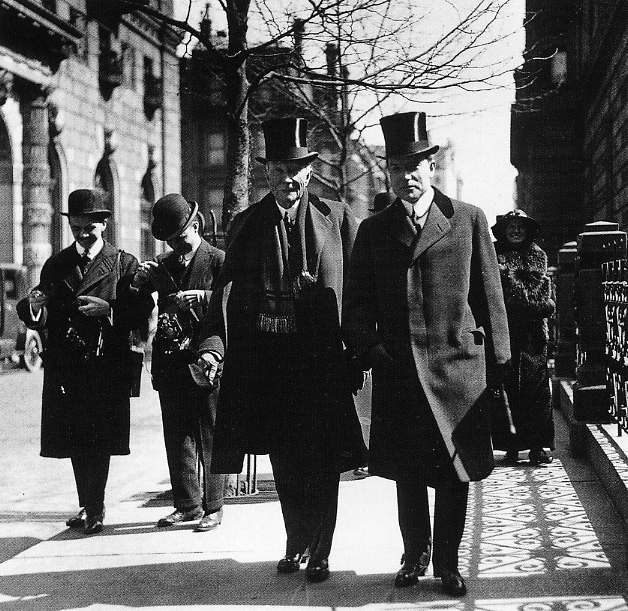 John D. Rockefeller (1839-1937)
and his son, John Jr.
John D. Rockefeller (1839-1937)
and his son, John Jr.
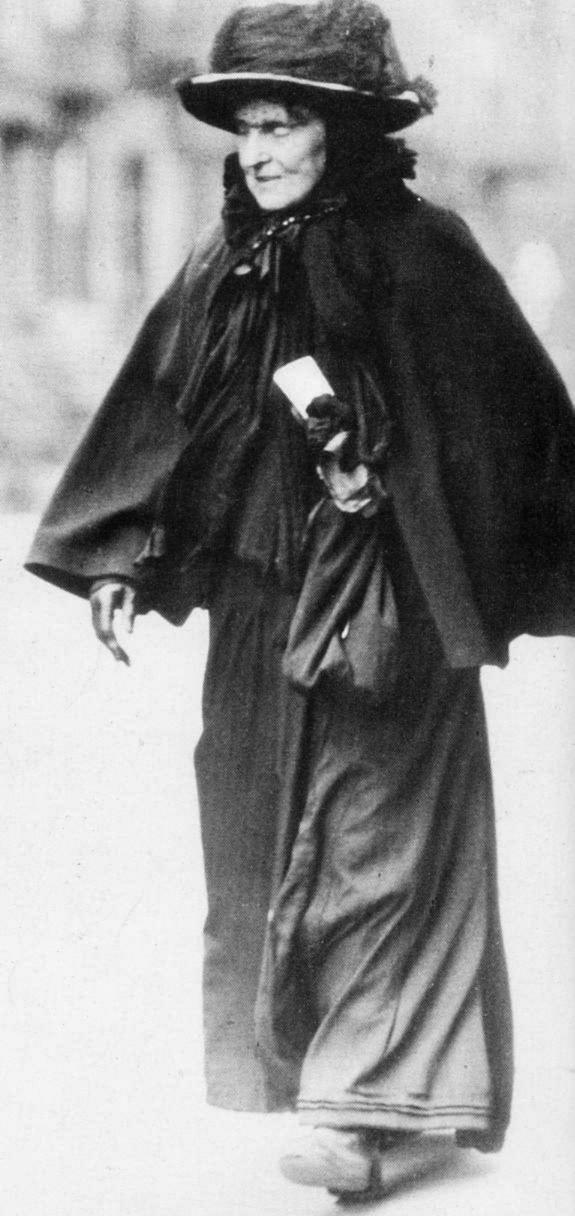 Hetty Green – America's
wealthiest
woman (and most miserly) (1835-1916)
Hetty Green – America's
wealthiest
woman (and most miserly) (1835-1916)
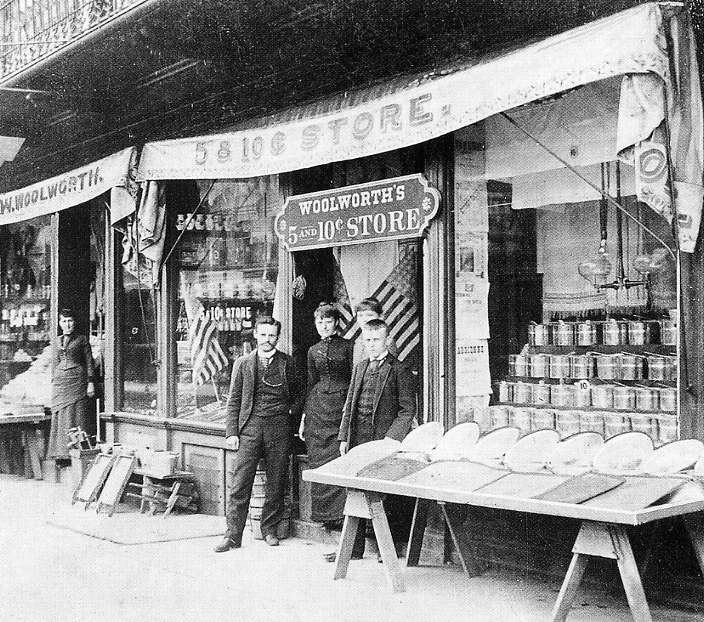 Frank W. Woolworth and his
first 5 and 10 cent store in Lancaster, PA – 1879.
Frank W. Woolworth and his
first 5 and 10 cent store in Lancaster, PA – 1879.
At the height of his retail
chain's success it owned 8,000 stores worldwide.
THE EXTRAVAGANCE OF THIS WEALTHY ELITE IN CONTRAST WITH THE OLDER PURITAN IDEALS OF YANKEE
AMERICA IS MIND-BOGGLING |
 An Olympian fellowship of
America's wealthiest men at a banquet honoring Harrison
Grey Fiske (center) – 1901
An Olympian fellowship of
America's wealthiest men at a banquet honoring Harrison
Grey Fiske (center) – 1901
The Byron Collection, Museum
of the City of New York
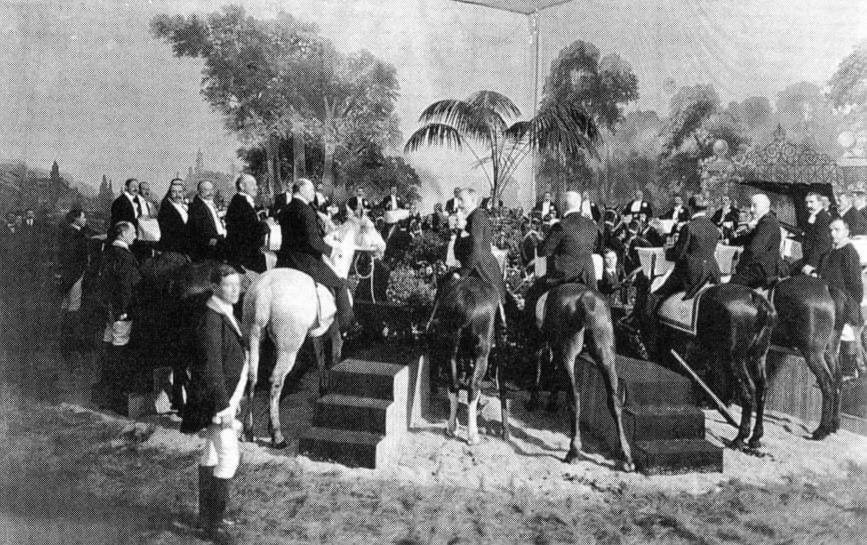 Dinner on horseback at Sherry's
Restaurant – New York, 1903
Dinner on horseback at Sherry's
Restaurant – New York, 1903
Byron / Museum of the City
of New York
 One of four Vanderbilt mansions
[Cornelius Vanderbilt's] on 5th Avenue in Manhattan
One of four Vanderbilt mansions
[Cornelius Vanderbilt's] on 5th Avenue in Manhattan
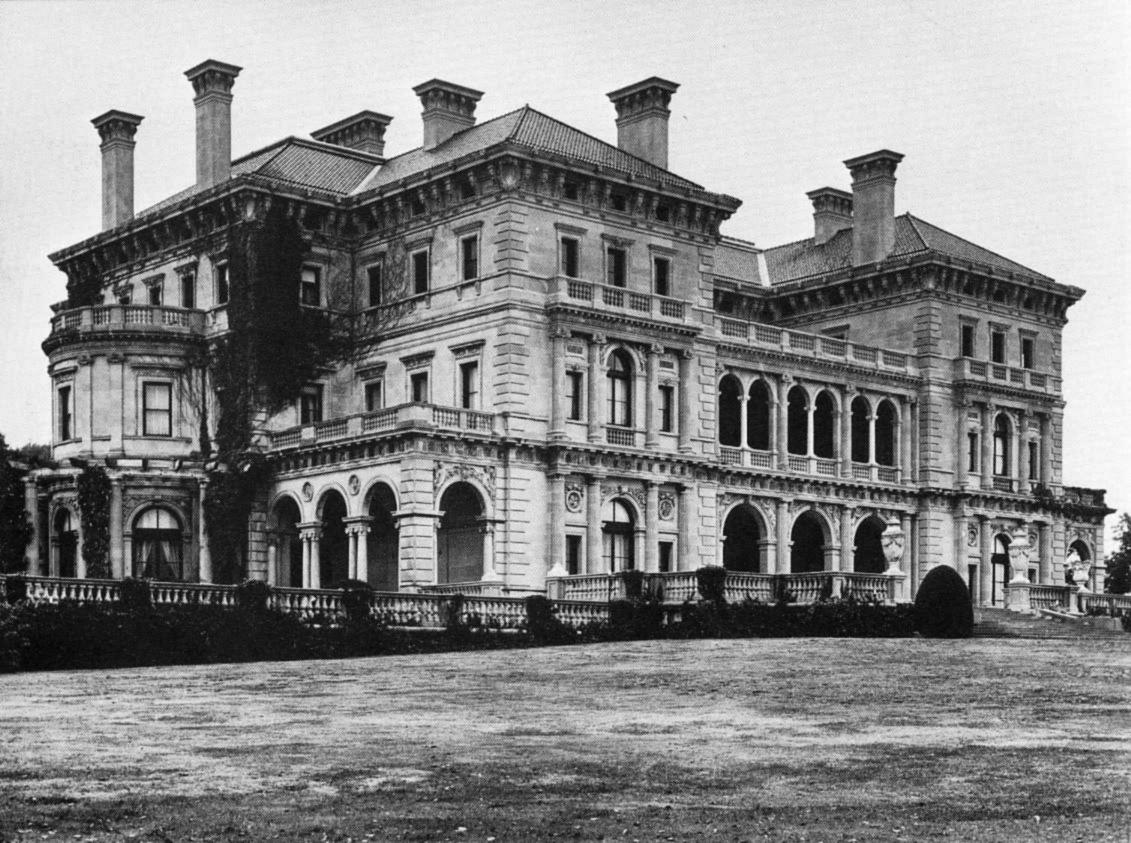 Cornelius Vanderbilt's summer
mansion, "The Breakers," in Newport, Rhode Island
Cornelius Vanderbilt's summer
mansion, "The Breakers," in Newport, Rhode Island
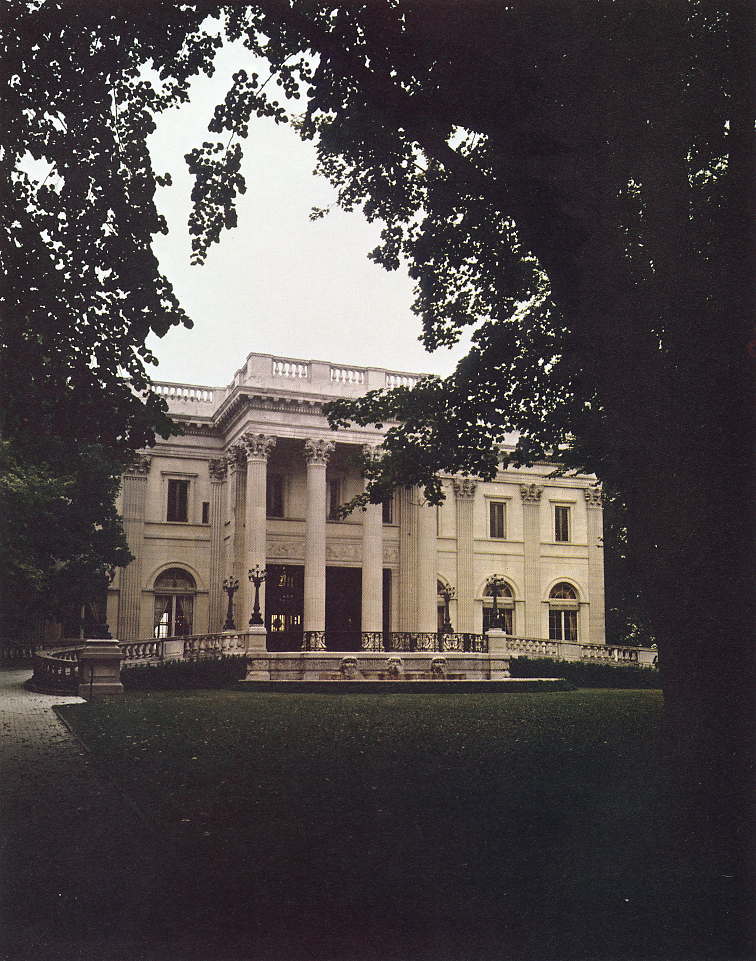 William Vanderbilt's summer
mansion, "Marble House," in Newport
William Vanderbilt's summer
mansion, "Marble House," in Newport
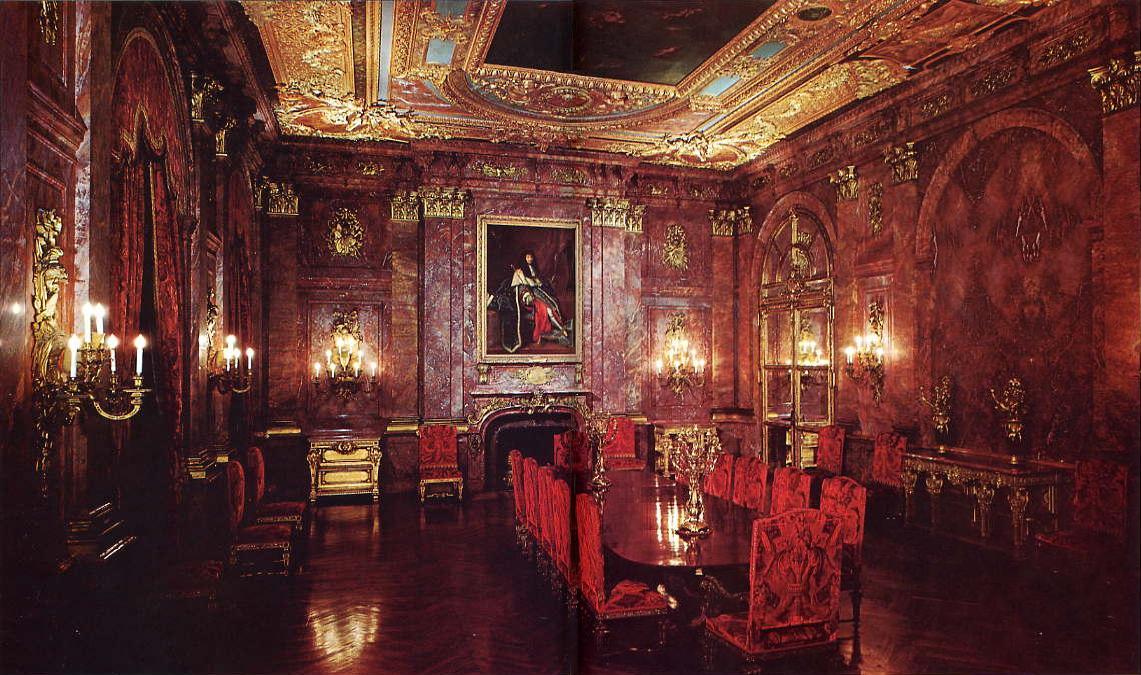 The dining room in William
Vanderbilt's "Marble House"
The dining room in William
Vanderbilt's "Marble House"
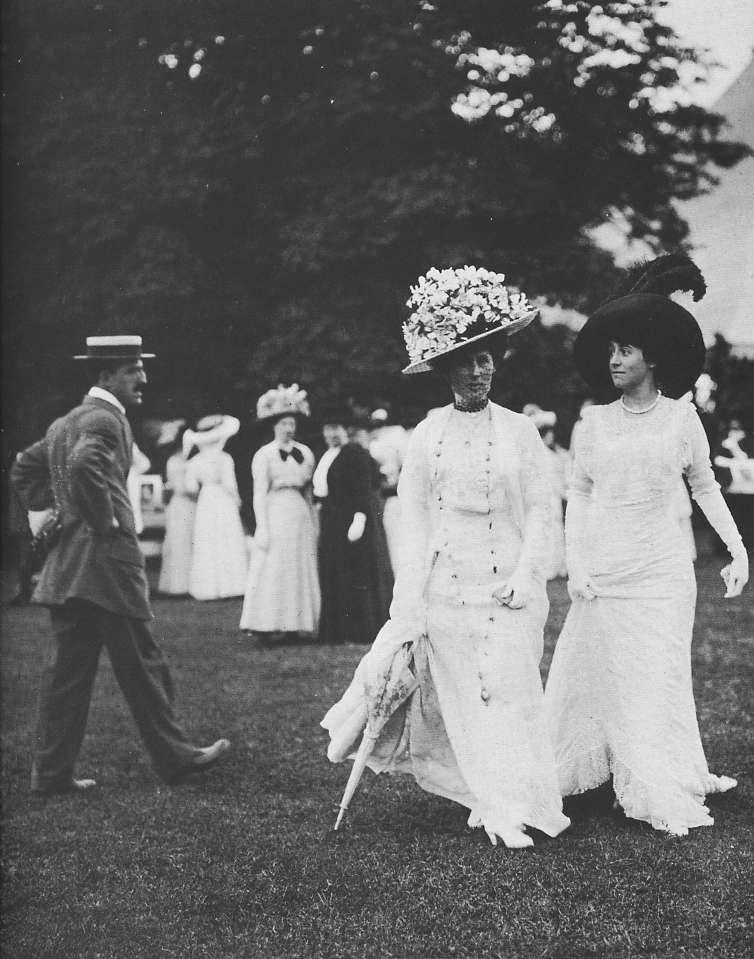 Promenading on the Newport
greensward
Promenading on the Newport
greensward
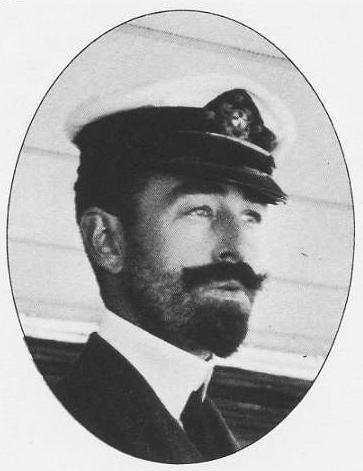 Commodore C.
Vanderbilt
Commodore C.
Vanderbilt
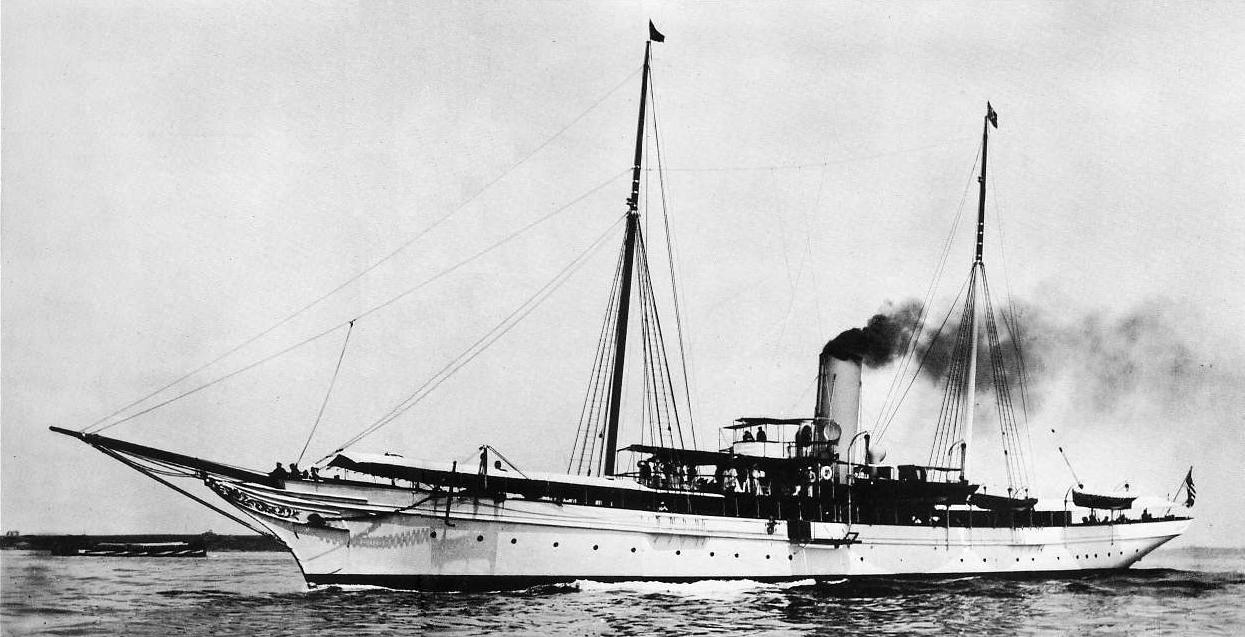 Commodore C. Vanderbilt's
256-foot yacht "North Star"
Commodore C. Vanderbilt's
256-foot yacht "North Star"
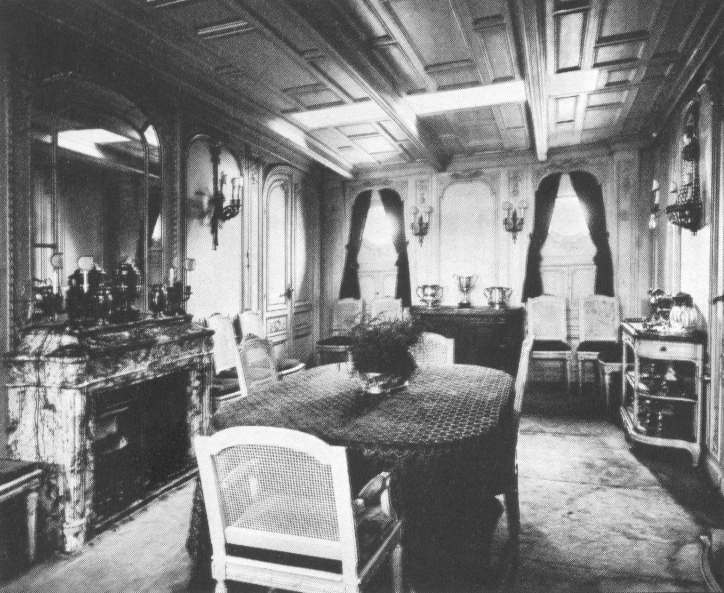 The dining room of
"North Star"
The dining room of
"North Star"
 The stateroom of "North
Star"
The stateroom of "North
Star"
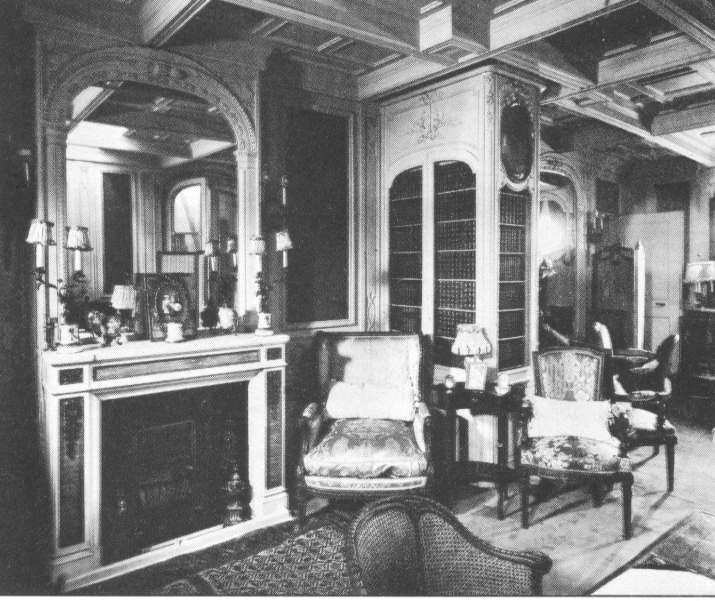 The library of "North
Star"
The library of "North
Star"
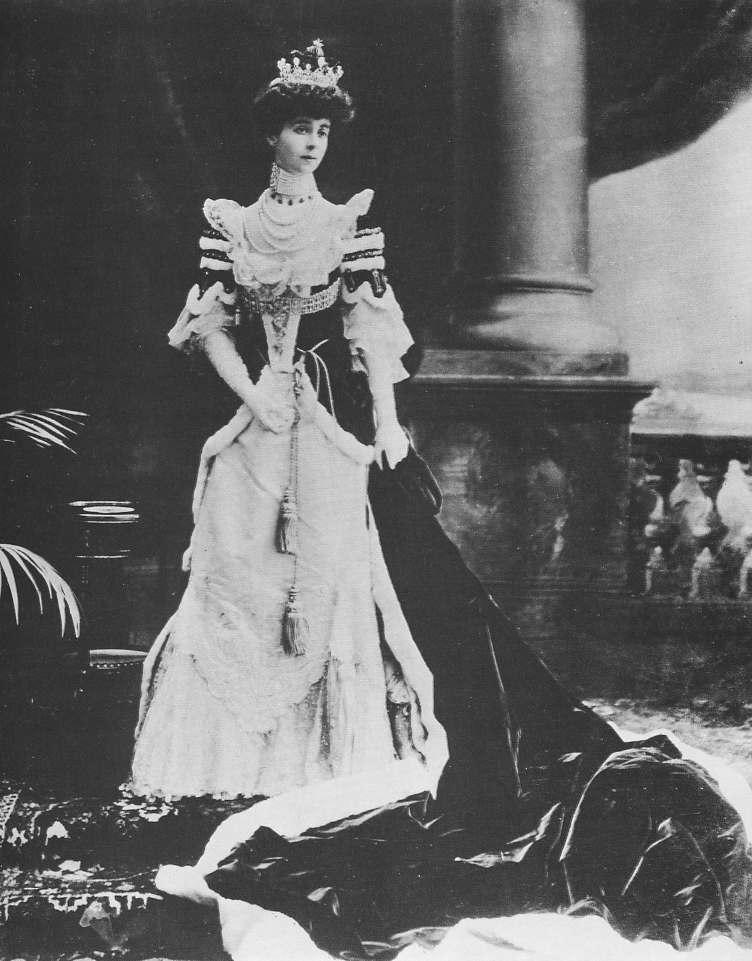 Consuelo Vanderbilt (married
to the Duke of Marlborough) at the coronation of Edward VII
Consuelo Vanderbilt (married
to the Duke of Marlborough) at the coronation of Edward VII
THE AMERICAN "MIDDLE CLASS" IS ALSO DOING PRETTY WELL FOR ITSELF |
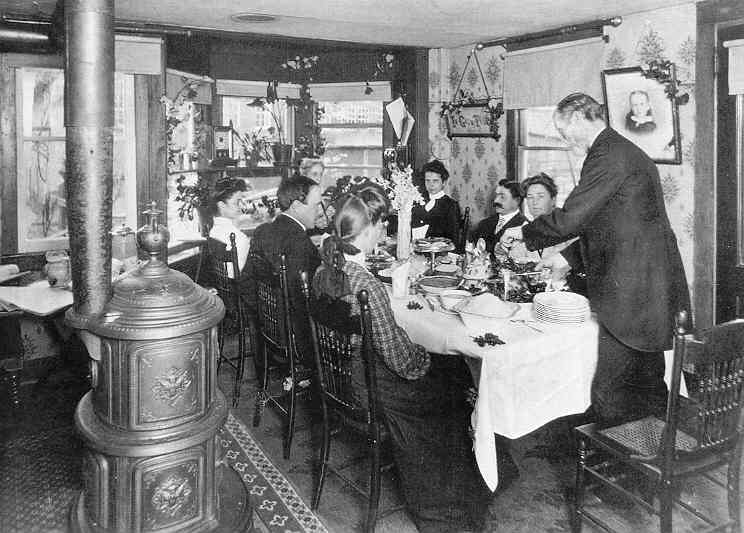 Comfortable Middle-Class
American Family – 1906
Comfortable Middle-Class
American Family – 1906
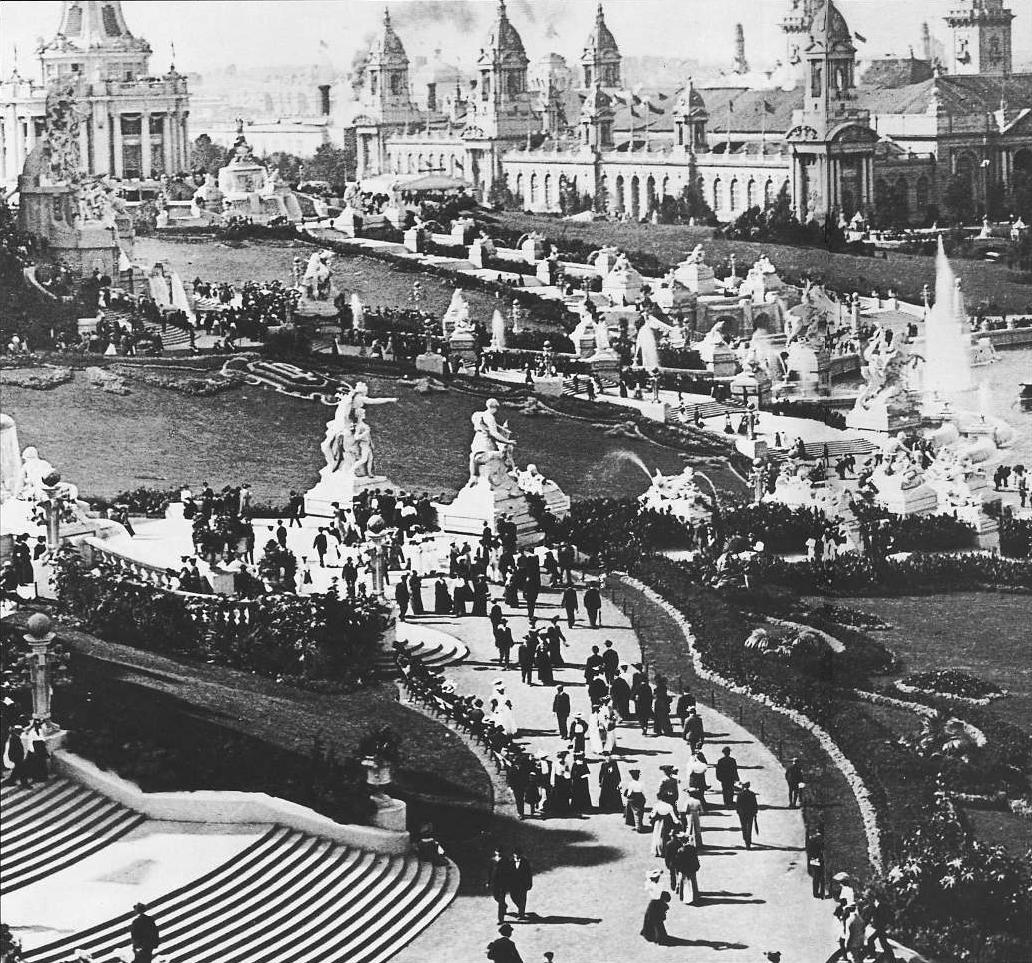 The St. Louis World Fair
- 1904
The St. Louis World Fair
- 1904
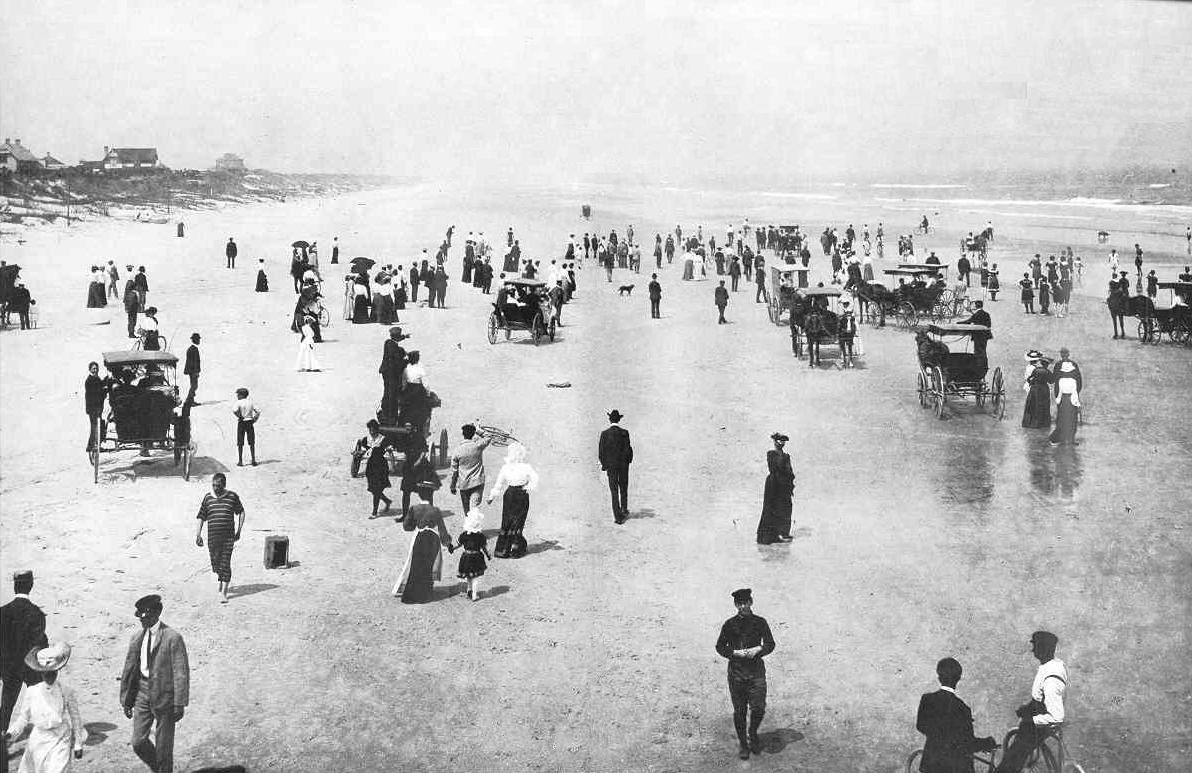 Daytona Beach, Florida -
1904
Daytona Beach, Florida -
1904
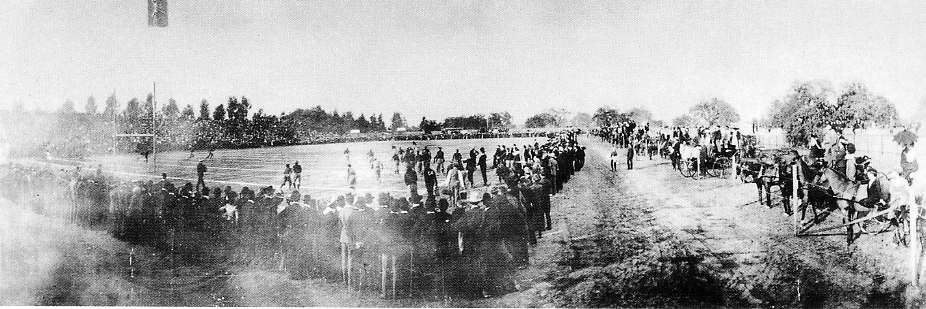 The first Rose Bowl game
in Pasadena, California – New Year's Day 1902
The first Rose Bowl game
in Pasadena, California – New Year's Day 1902
(Michigan beat Stanford
49-0)
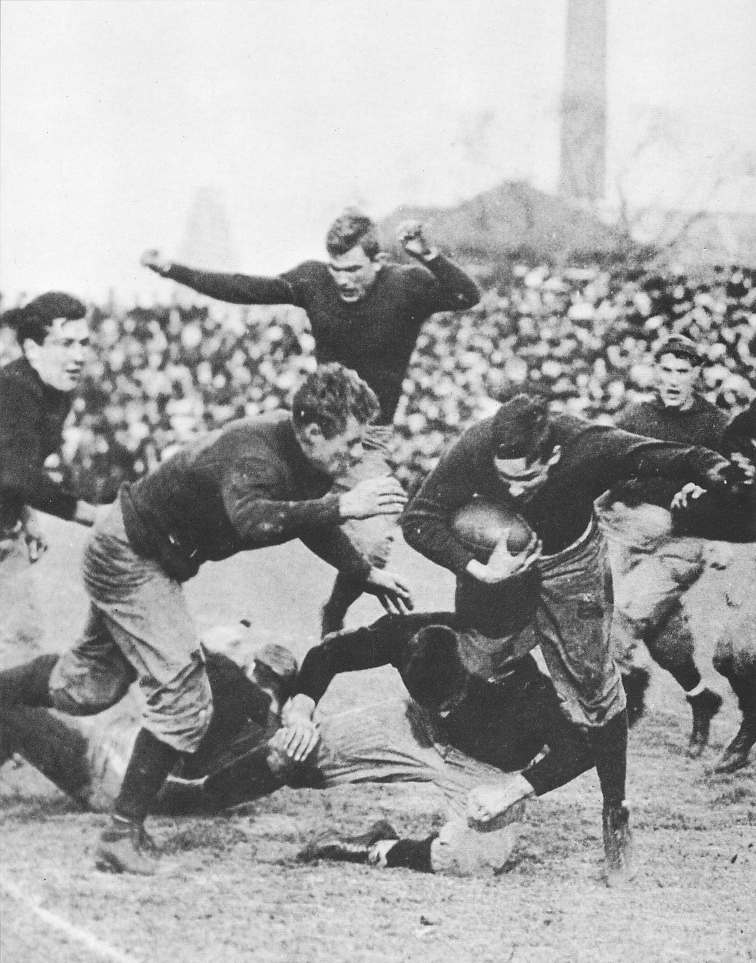 The Harvard-Yale championship
football game of 1907
The Harvard-Yale championship
football game of 1907
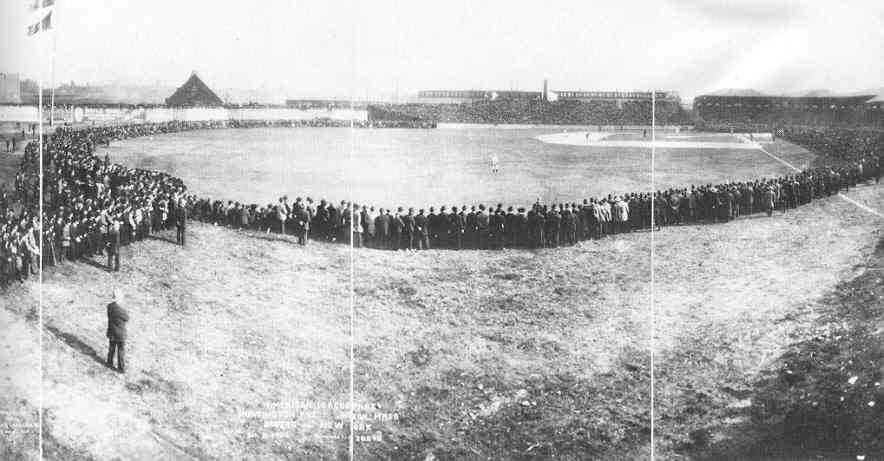 American League Baseball
- Boston vs. New York at Boston – 1904
American League Baseball
- Boston vs. New York at Boston – 1904
Library of
Congress
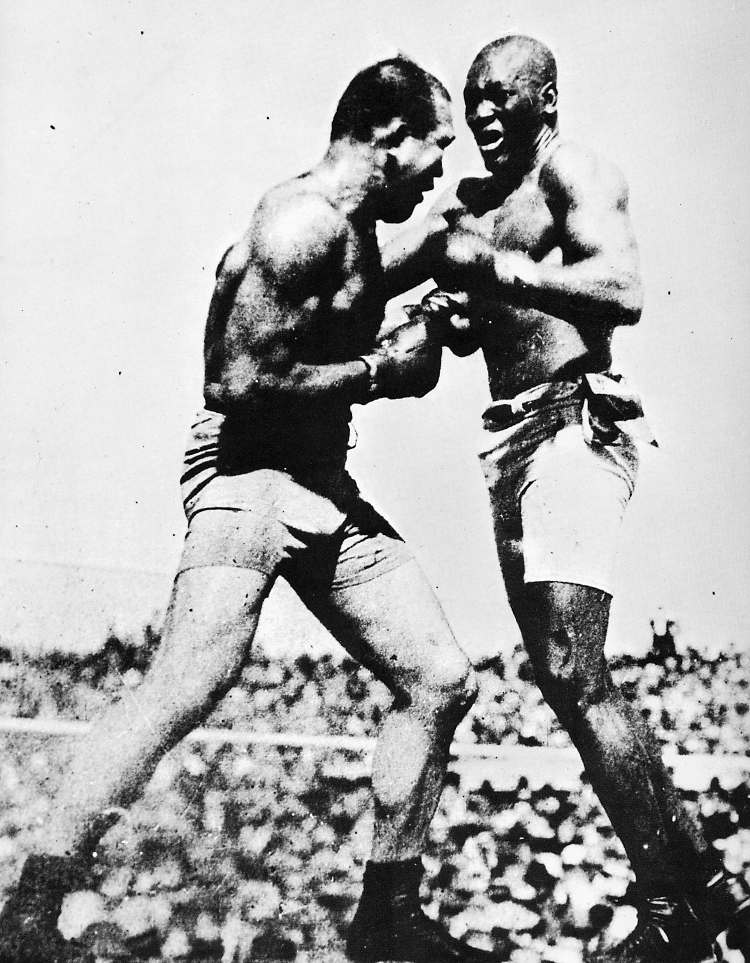 The Jim Jeffries – Jack Jackson
heavyweight championship bout – July 4, 1910
The Jim Jeffries – Jack Jackson
heavyweight championship bout – July 4, 1910
AMERICANS CAN AFFORD EVEN THE LUXURY OF IDEALIZING THE AMERICAN WOMAN |
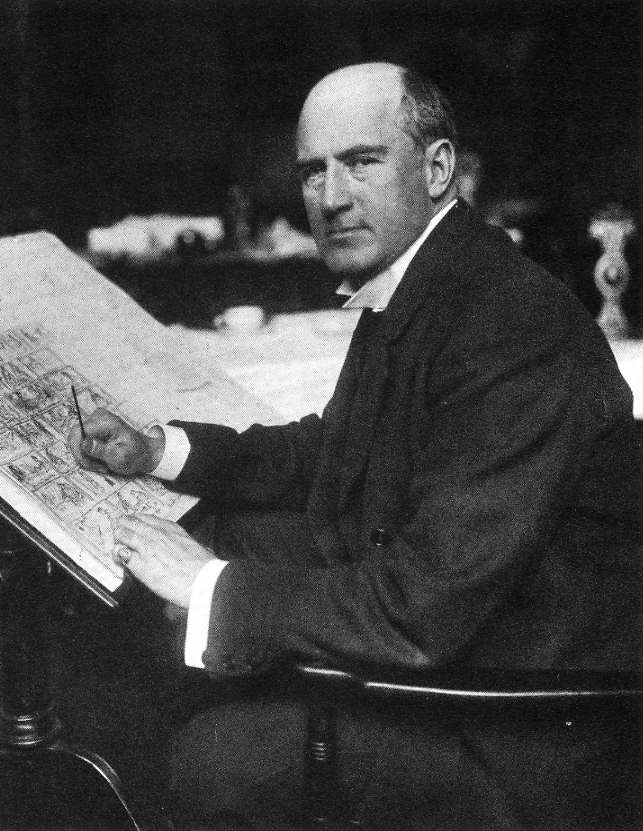 Dana
Gibson
Dana
Gibson
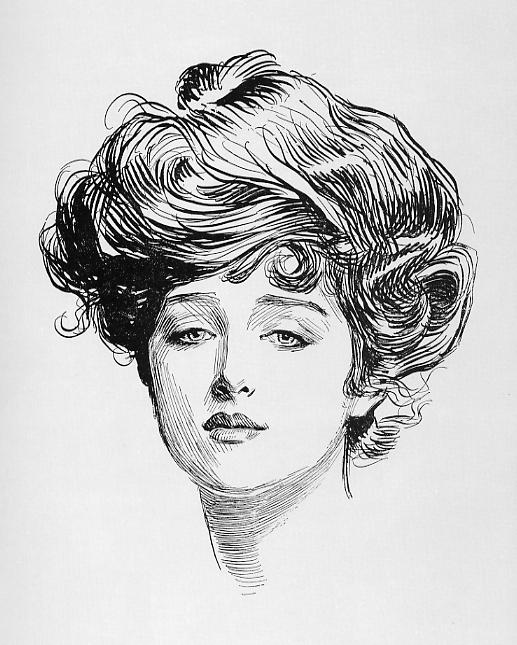 The Gibson girl – the idealized
American beauty created by artist Dana Gibson
The Gibson girl – the idealized
American beauty created by artist Dana Gibson
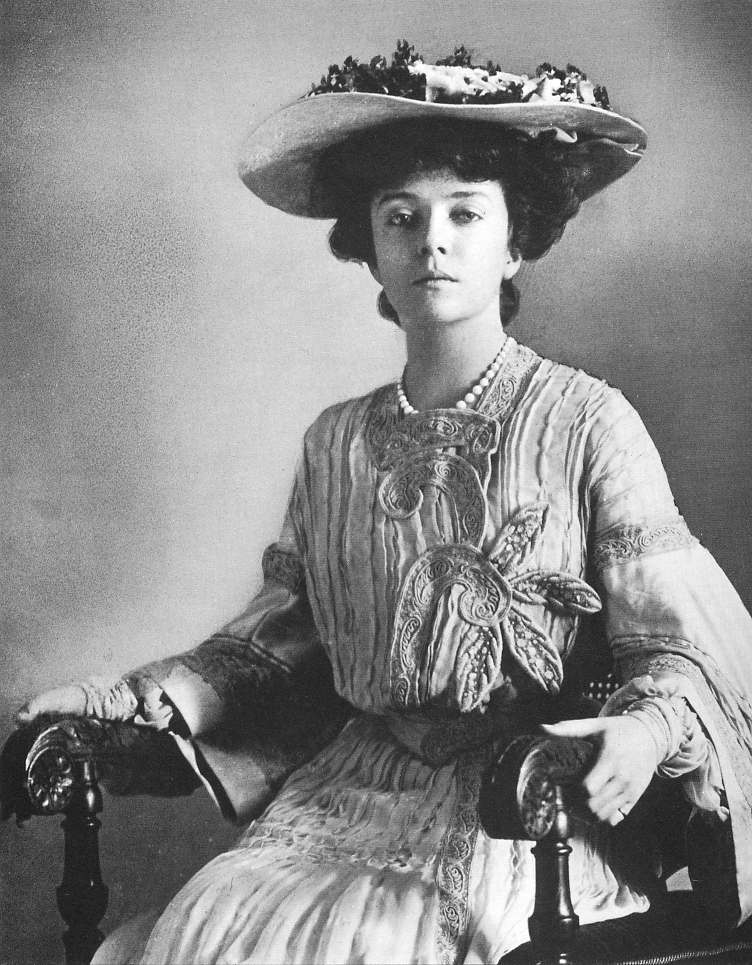 Alice Roosevelt, daughter
of the President – "woman of the decade"
Alice Roosevelt, daughter
of the President – "woman of the decade"
OF
COURSE NOT ALL WAS PERFECT IN THE PICTURE OF THE GILDED AGE |
A horrible shattering of
that picture occurred in on April 8, 1906 - the San Francisco earthquake
and fire
 San Francisco earthquake
and fire, April 18, 1906
San Francisco earthquake
and fire, April 18, 1906
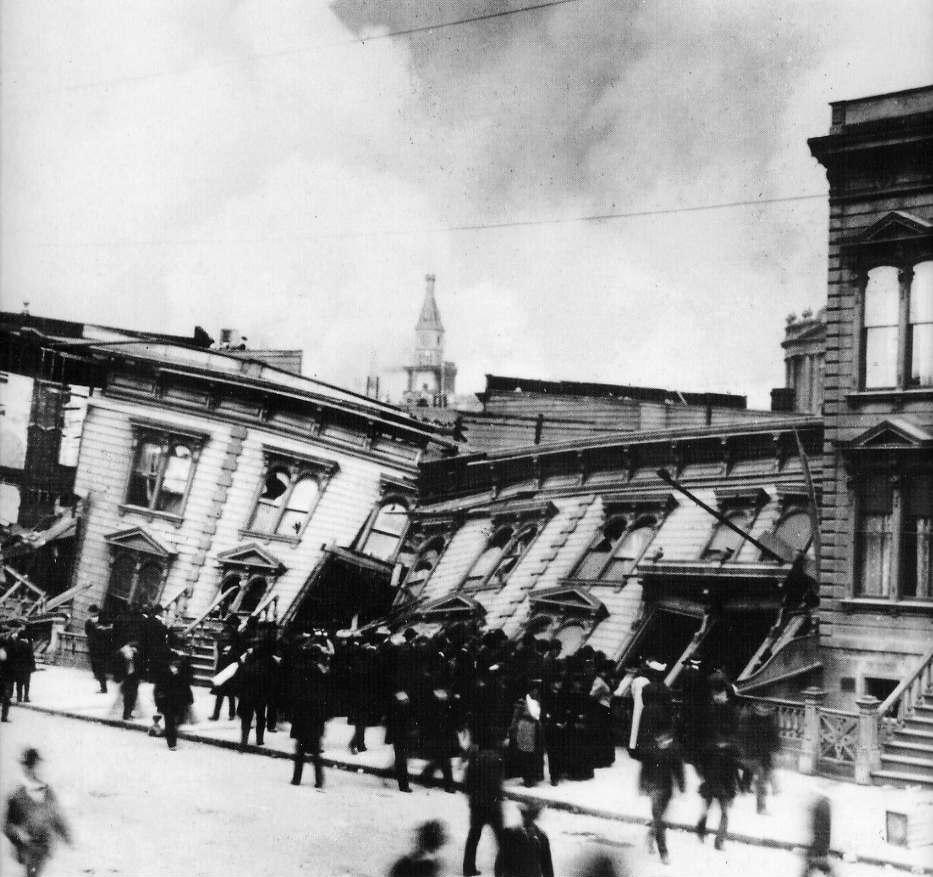
The San Francisco earthquake
and fire – April 18, 1906
 San Francisco Burning – April
18, 1906
San Francisco Burning – April
18, 1906
People on Russian Hill look toward San Francisco's downtown, (including the Hall of Justice, Merchants Exchange, and
Mills Building), burning after being shocked by a powerful earthquake.
 "Typhoid Mary" Mallon – a
cook for wealthy families who caught her disease. Although she was diagnosed
with the disease in 1907, she continued to work under various aliases until
1915 – when she was finally institutionalized for life.
"Typhoid Mary" Mallon – a
cook for wealthy families who caught her disease. Although she was diagnosed
with the disease in 1907, she continued to work under various aliases until
1915 – when she was finally institutionalized for life.
| | |

 Capitalism in the "Gilded Age"
Capitalism in the "Gilded Age"
 The "Captains of Industry" (or "Robber
The "Captains of Industry" (or "Robber The extravagance of this wealthy elite
The extravagance of this wealthy elite
 The American "Middle Class" is doing
The American "Middle Class" is doing Americans can afford even the luxury of
Americans can afford even the luxury of Of course not all was
perfect in the
Of course not all was
perfect in the






































